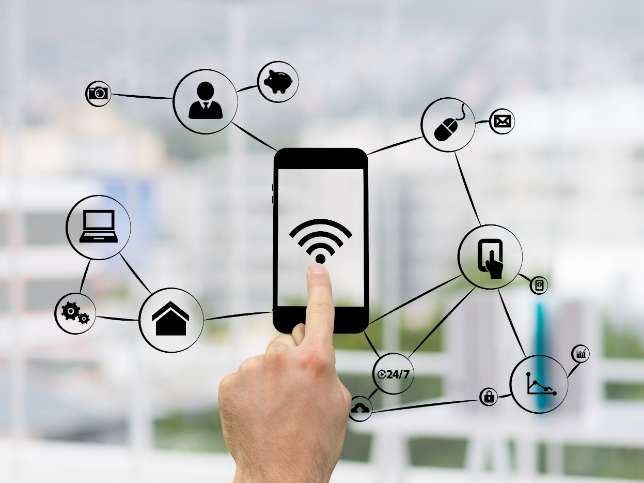- The global IoT market is projected to reach $1.1 trillion by 2026.
- Major sectors like healthcare, manufacturing, and smart homes are leading IoT adoption.
The Internet of Things (IoT) is transforming the way we live, work, and interact with the world around us. As devices become increasingly interconnected, the IoT market is experiencing rapid growth, promising a future where everything from our homes to our cities operates seamlessly. But what exactly is the IoT market, and how is it shaping our lives?
1. Defining the IoT market
The IoT market refers to the network of physical objects embedded with sensors, software, and other technologies that enable them to connect and exchange data with other devices and systems over the internet. These ‘smart’ devices range from everyday household items like thermostats and refrigerators to complex industrial machines. The goal of IoT is to create a more efficient, responsive, and interconnected world.
2. Key components of the IoT market
a. Devices and sensors
IoT devices and sensors are the foundation of the IoT market. These gadgets collect data from their surroundings, allowing for real-time monitoring and decision-making. Examples include wearable fitness trackers, smart thermostats, and industrial sensors.
b. Connectivity
Connectivity is crucial for the IoT ecosystem. Devices use various communication protocols, such as Wi-Fi, Bluetooth, and cellular networks, to transmit data. This connectivity enables seamless interaction between devices and central systems.
c. Data processing and analytics
The data collected by IoT devices is processed and analysed to derive meaningful insights. Advanced analytics and machine learning algorithms help in predicting trends, optimising performance, and making informed decisions. For instance, smart grids use data analytics to manage electricity distribution efficiently.
d. User interfaces
User interfaces, such as mobile apps and web dashboards, allow users to interact with IoT devices. These interfaces provide real-time updates, control options, and insights into device performance.
Also read: 25 smart home and IoT technologies that might just change your life
Also read: Quectel presents latest IoT innovations at CommunicAsia 2024
3. Major sectors driving IoT adoption
a. Healthcare
The healthcare sector is leveraging IoT to improve patient care and streamline operations. Wearable devices monitor vital signs, while smart equipment tracks patient movements, reducing the risk of falls. Remote patient monitoring and telehealth services are also becoming more prevalent.
b. Manufacturing
In manufacturing, IoT enhances operational efficiency and reduces downtime. Smart factories use connected machines and sensors to monitor production processes, predict maintenance needs, and ensure quality control.
c. Smart homes
Smart home technology is one of the most visible aspects of the IoT market. Devices like smart speakers, lighting systems, and security cameras create a connected living environment, providing convenience and security for homeowners.
Additional Information
The IoT market is not without challenges. Security and privacy concerns are significant, as interconnected devices can be vulnerable to cyber-attacks. For example, in 2016, the Mirai botnet attack compromised thousands of IoT devices, leading to widespread internet outages. Ensuring robust security measures and privacy protection is crucial for the sustained growth of the IoT market.
Real-world examples of successful IoT implementations include the city of Barcelona, which uses IoT technology for smart parking, waste management, and energy-efficient street lighting. These initiatives have resulted in significant cost savings and improved quality of life for residents.
Opinion Summary
As I reflect on the potential of the IoT market, I am both excited and cautious. The integration of smart devices into our daily lives promises unparalleled convenience and efficiency. Yet, the rapid expansion of IoT also necessitates stringent security measures to protect our privacy. In embracing this interconnected future, we must balance innovation with vigilance, ensuring that the benefits of IoT technology are realised safely and sustainably. The IoT market is not just about technology; it’s about enhancing our world while safeguarding our values.

